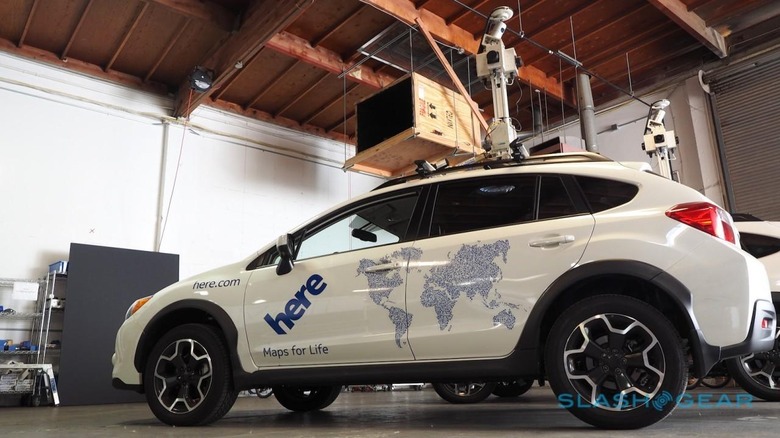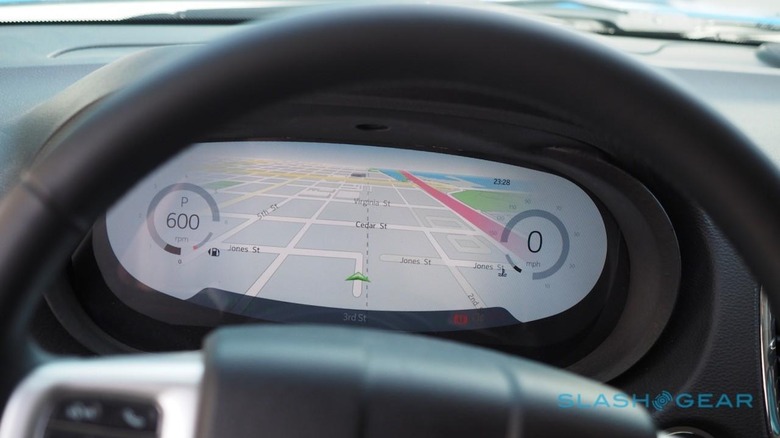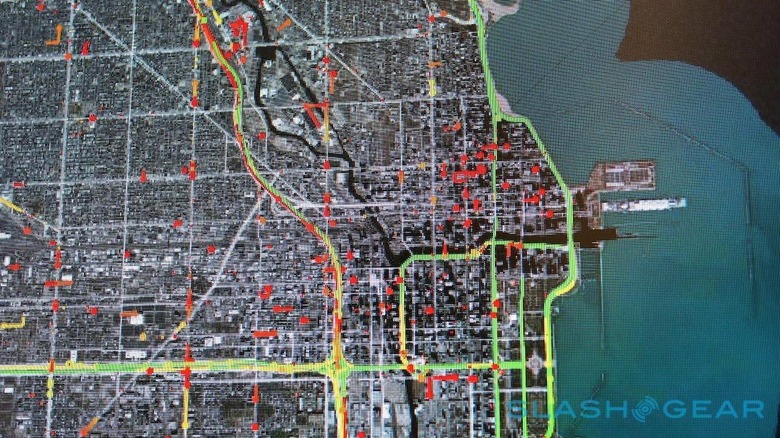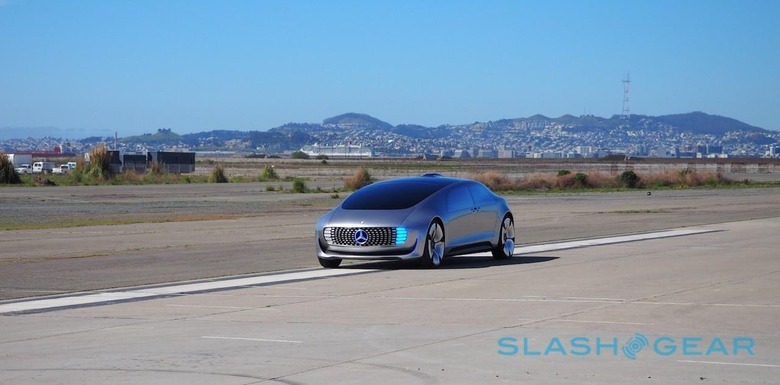Driving Change: Big Auto's $2.7 billion bet on HERE
HERE's plans for the self-driving future can finally emerge from their autopilot holding-pattern, with the company and its new automaker owners holding a quiet but enthusiastic coming out party in San Francisco today. Representatives from Audi, BMW, and Mercedes-Benz parent Daimler joined HERE execs to talk about the development of high-definition mapping, location-based services, and cars that whisper to the cloud and – eventually – drive themselves.
It's the first time representatives from the four companies have sat down publicly and discussed the deal, the collective mouth having been sealed until the ink was dry on Nokia's contract.
"The acquisition of HERE by three competitors in the luxury sector is unprecedented," Klaus Froehlich, member of the board of management of BMW AG, said today.
"Automated driving will become one of the major trends in the automotive sector ... it's always a question of when and not if," he pointed out. "HERE is going to provide a high-definition map for us ... the resolution will be up as much as 10x compared to today ... we need 99.5-percent [accuracy] to be safe on the roads."

While it may be an acquisition, the deal HERE cut with the consortium of automakers – I'm told there's no official name for the trio – is surprising in its flexibility.
For a start, though they're putting in $2.7bn, Audi, BMW, and Daimler don't walk away with joint control of the mapping specialist. Instead, it'll operate as an independent company, with a new supervising board that will include not only representatives from the automakers but independent nav-industry specialists too.
"HERE will remain open to other investors, and we will invite other partners to join," Froehlich insisted. "We simply wanted to project the company, because when we are realistic about the automotive community we only have three [mapping] providers."

So, Audi, BMW, and Mercedes-Benz will stay as HERE customers on the one hand, even as their connected cars feed fresh data into HERE's cloud.
Right now, more than two million cars from the three are already cellularly-enabled, and plans are afoot to supply anonymized data from those vehicles that will help both with existing mapping and the new generation of high-definition maps that will be instrumental in developing smart cities and autonomous vehicles.
HERE already gathers what it calls "probe" data from smartphones running its software and other devices, consisting of nothing more than a unique ID, location, speed, and direction. From that – two billion data points a day, in fact – it can figure out traffic conditions as well as identify new roads based on vehicle flow.
The next step to that, HERE's vice president of reality capture John Ristevski explained to me, is baking in data from the variety of extra sensors in the modern car. Such "rich sensor feeds" could provide details on individual lane closures, weather conditions – like whether the windshield wipers are on, or if the traction control is struggling with slippery roads – and even unexpected issues like animals in the path of traffic.

"Until now," Froehlich pointed out, "the sensors have only been used for driving assistance services within the car."
NOW READ: HERE's connected car language could steer autonomous driving
It's early days, but what's taking shape is a combination of local processing and cloud services – "in the end," the BMW exec said, "each car only has perhaps 99.9 or 99.8 percent availability of the network" – that would maximize performance while minimizing how much data would have to ping through the mobile networks.
"The amount of data is not as high as one might expect," Dr. Peter Steiner, head of Audi electronics venture, explained. "We are not video streaming, we are feeding back or broadcasting what is already a condensed data set."
So, onboard processing would handle basic feature-extraction, transmitting the core details to HERE's cloud, while anything more complex or confusing to the car could be sent as images for the more advanced machine learning to figure out.

Privacy is the looming specter around any connected car service, and it's something all four companies are taking seriously from the outset. Mindful, perhaps, that even the whiff of mishandled data could set smart mobility back decades, the consortium is taking a hard line.
"Privacy will become more important, more premium in the future," BMW's Froehlich argues, "we do not accept partners that compromise the privacy of our customers."
"Data privacy, this is the utmost thing for us," Sajjad Khan, VP of digital vehicle and mobility at Daimler, concurred, "next to data security, which is just as competitive."
NOW READ: This is the future of Smart Cities
True autonomy is still some way out. Froehlich envisages it taking two to three years before a standard for dynamically-updated and maintained mapping data is settled upon, which takes into account sensor information from individual vehicles.
"I think in certain regions, automated driving will be even faster," he predicted, such as ride-sharing services where cars would only need to have HD mapping for a single city or location. For full autonomy, though, "I don't see it within the next eight to ten years, honestly," Froehlich says.
That may seem conservative, but it means full speed ahead for HERE. "We do not have much time to waste," he concluded, "we need this new generation of maps as soon as possible, because the gradient of driving to assisted or autonomous driving is quite steep."
